Fluorite - the Rainbow Beauty
Fluorite is known as one of the very important industrial minerals and it is also the only widespread natural source of fluorine. Many mineral collectors are interested in fluorite because of its beauty, richness of forms and its broad spectrum of colors.
The discovery of fluorite was first mentioned by Georgius Agricola in 1530 who lived as a scientist in Germany. While George Gabriel Stokes found that fluorite exhibits a certain phenomenon called fluorescence which he coined the term back in 1852.
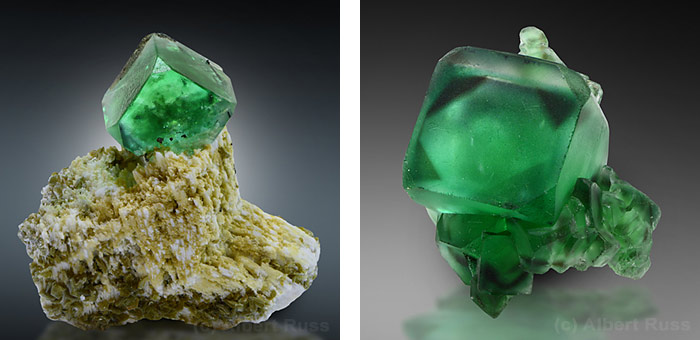
The word fluorite was derived from the word fluo which is a Latin language meaning flow of water. A variety of name calls for the minerals include Calx fluorata and Spatum vitreum before it was distinguished as fluorite. In the mid-19th century, the first usage of the word fluorite was recorded in history which came from the English word fluorspar. Nowadays, the word fluorspar is the equivalent of the word fluorite when it comes to the commercial and industrial field.
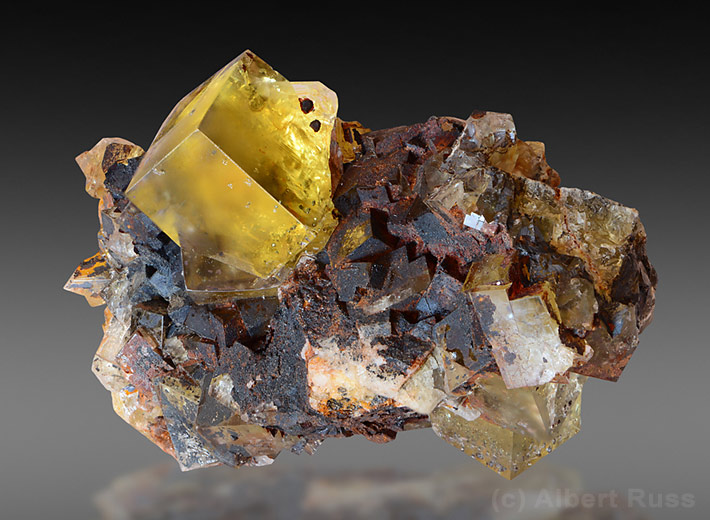
Fluorite is widely used in the fields of metallurgy, chemical and ceramics. In the chemical industry, fluorspar has been the biggest source of production of fluorine, metallurgical flux (cryolite) and hydrofluoric acid. Clear and pure fluorite is used to make high-end optics. The fluorite lenses are commonly used in microscopes, cameras and even telescopes. Gemmy fluorite is very nice but also very fragile to be widely used in jewelry.
Physical properties and structure
The fluorite is calcium fluoride CaF2 and belongs to halides. The typical colors of fluorite ranges from light to dark transparency. The common fluorite colors include green, yellow and purple, fluorite can also be completely clear and colorless. Other colors include yellow, blue, brown, black and red. Fluorite color is very sensitive to heating and radiation, some fluorites can fade even on direct sunlight. The Mohs hardness of fluorite is 4 and the specific gravity is 3.2 g/cm3. The fluorite displays perfect cleavage.

Right: Sceletal fluorite with calcite from China. Crystal size 2 cm. Photo: Zbyněk Buřival, Martin Gruell collection
Fluorite is simple cubic mineral and forms cubes, octahedrons or their combinations. Some more complicated forms can include many crystal faces, fluorite readily forms penetration twins and sceletal crystals. Colored zones and phantoms are also quite common. The biggest fluorite crystals were over 1 m large, crystals 20-30 cm large are still found on many fluorite deposits worldwide.
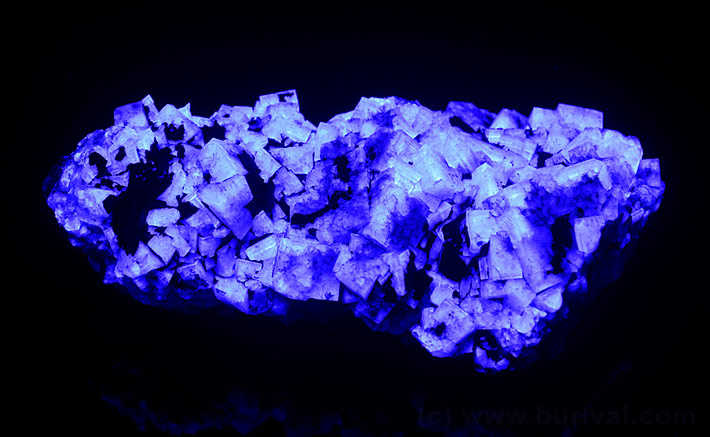
Fluorite glows under UV light (black light) which is known as fluorescence. The less known feature is the ability of fluorite to glow after heating (thermoluminescence) - though this is not recommended to try with crystals, they might easily fall apart! Fluorite readily incorporates REE into its structure and especially Y and Ce are often present. Some fluorites can be slightly radioactive.
Fluorite origin
Fluorite is almost always of hydrothermal origin. Most typical are hydrothermal veins with fluorite and baryte, calcite is also often present. Fluorite can be present also on many sulfide deposits. Fluorite is also typical for greisen type deposits. Some fluorite might be present also in certain type of NYF or miarolitic pegmatites or alpine type veins.
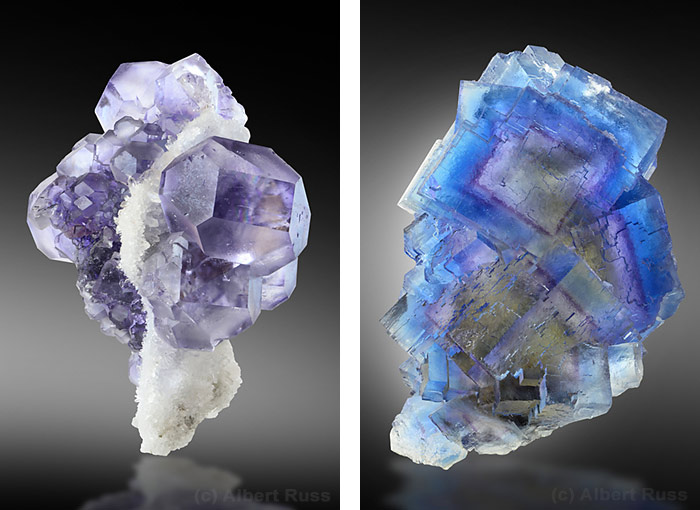
Right: Colorful zoned fluorite from Cave in Rock, Illinois, USA. Height 17 cm. Both photos: Albert Russ, collection: Jürgen Margraf
The other types of fluorite come from skarns, stratiphorm deposits, metasomatic deposits and sometimes can be also of sedimentary origin. These forms are usually layered ugly forms of fluorite and rarely form nice crystals.
Occurence of fluorite
Deposits of fluorite include over 9000 places all over the world. It is recorded that South Africa has the largest fluorite deposit globally. The country is followed by Mexico and lastly, China. However, when it comes to fluorite production, the China is the leading producer. Mexico comes next after China while South Africa is in the fifth rank. In North America, the largest deposit of fluorite is known to be existing in Newfoundland, Canada.
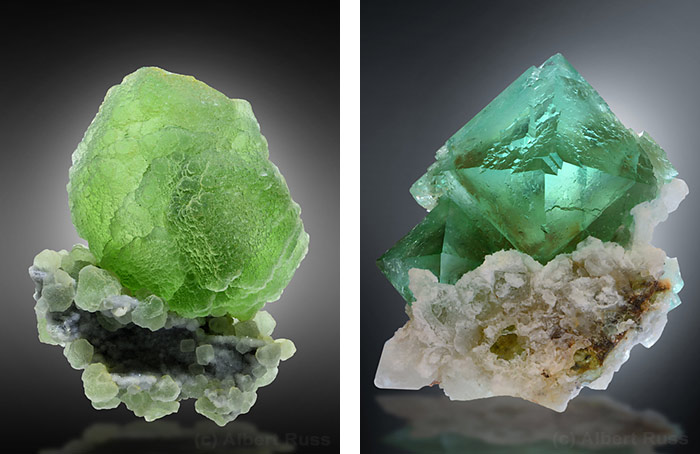
Right: Rare green fluorite octahedrons from Riemvasmaak, South Africa. Both photos: Albert Russ, collection: Jürgen Margraf
Excellent water clear fluorites come from Dalnegorsk in Russia and one of the worlds best quality fluorite is mined in Rogerley mine, England. Extremely rare fluorite spheres are found in some basalt vugs in India or on some deposits in China. Great fluorites come from Alston Moor and Weardale in England and Berbes in Spain. Various types of fluorite come from many mines in China, Morocco, Mongolia, USA and Mexico. Nice pink octahedrons were found recently in Huanzala, Peru. Very popular (and expensive) are also purple cubes together with rhodochrosite from Sweet Home Mine in Colorado. The most famous banded form of fluorite is called Blue John which can be seen in Derbyshire, United Kingdom.
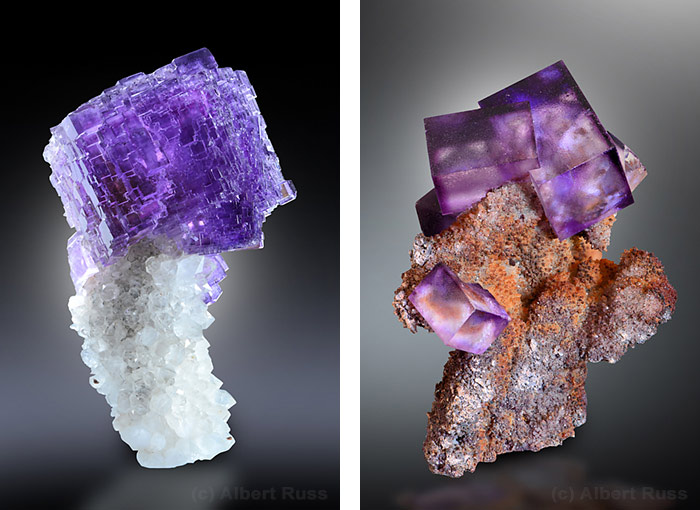
Right: Elongated purple fluorite cubes from Spain. Height 5 cm. Both photos: Albert Russ, collection: Jürgen Margraf
Nice deep blue fluorites were found in miarolitic pegmatites in Strzegom, Poland and green octahedron occur in pegmatites in Namibia. Interesting bluish cubes are sometimes present in pegmatite pockets in Lake George, Colorado and in Gorkhi Massif, Mongolia.
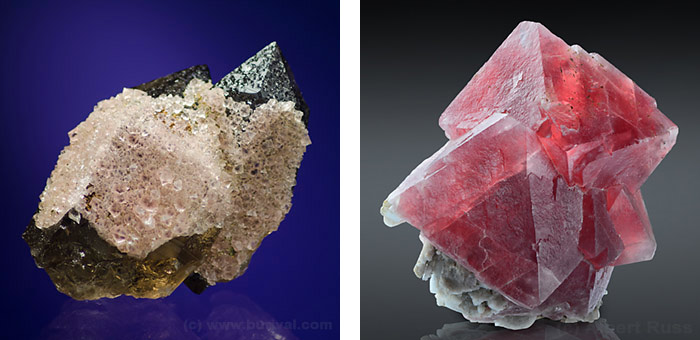
Right: Red fluorite octahedrons from French Alps. Height 10 cm. Photo: Albert Russ, collection: Jürgen Margraf
The highly priced pink or even red fluorite octahedrons from alpine type veins come from Mt. Blanc area and some other places in Switzerland, cubic blue and green alpine fluorite is more widespread in Austria.





Comments